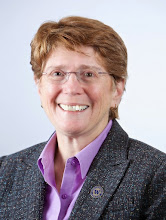The Fall 2005 issue of the American Criminal Law Review (vol. 42 no. 4) has a symposium on wrongful convictions and systemic reform, LexisNexis, Westlaw. Contents:
- Looking Foreword: Wrongful Convictions and Systemic Reform, by Daniel S. Medwed -- 42 Am. Crim. L. Rev. 1117
- How the Pretrial Process Contributes to Wrongful Convictions, by Andrew D. Leipold -- 42 Am. Crim. L. Rev. 1123, available on SSRN
- Lost Innocence: Speculations and Data about the Acquitted, by Daniel Givelber -- 42 Am. Crim. L. Rev. 1167
- System Failure, by Erik Luna -- 42 Am.Crim. L. Rev. 1201
- Moving Down the Wedge, by Andrew M. Siegel -- 42 Am. Crim. L. Rev. 1219
- Evidence Destroyed, Innocence Lost: the Duty to Preserve Potentially Exculpatory Forensic Evidence under Innocence Protection Statutes, by Cynthia E. Jones -- 42 Am. Crim. L. Rev. 1239
- The Role of Social Sciences in Preventing Wrongful Convictions, by Jacqueline McMurtrie -- 42 Am. Crim. L. Rev. 1271
- The Criminal Cases Review Commission as State Strategic Selection Mechanism, by Robert Carl Schehr -- 42 Am. Crim. L. Rev. 1289
Now is the time to implement reform. Ultimately, the public may become inured to news accounts of exonerations and the sheer volume of DNA exonerations will undoubtedly dwindle as pretrial DNA testing becomes more prevalent. These twin developments could, regrettably and inaccurately, signal to some people that wrongful convictions are no longer a problem -- that it has been "fixed."p. 1118. He identifies three broad themes in the symposium's papers:
the need to (1) examine the criminal justice system holistically and implement suitable structural changes; (2) continue to tinker with specific, micro-level elements of criminal law to protect innocent defendants; and (3) explore systems and theories outside American criminal law in seeking possible solutions.Id.
Professor Givelber wrestles with the empirical question whether people who are acquitted are innocent. He "explores the sources of the belief that the acquitted, like the convicted, are guilty" and looks at the data supporting that view. p. 1169.
The data are consistent with the view that acquittals may reflect the opportunity afforded the accused for the first time to present his side of the story to a relatively open-minded decision maker. The most likely reason for an acquittal in such circumstances, I suggest, is that the defendant is innocent.pp. 1169-70. An earlier version of this article is available on SSRN (Givelber, Daniel James, "Acquitting the Innocent" (November 9, 2003). Available at SSRN: http://ssrn.com/abstract=467520 or DOI: 10.2139/ssrn.467520).
Professor McMurtrie summarizes research and explains its relevance to three areas: eyewitness identification, false confessions, and child suggestibility. The fact that over 163 prisoners in the United States have been exonerated using DNA evidence shows that wrongful convictions do occur. Eyewitnesses whom the jury believed must indeed have been mistaken, and sometimes innocent people do confess to horrible crimes due to a variety of pressures. To reduce the likelihood of wrongful convictions, Prof. McMurtrie urges more use of the social science findings. For instance, an expert witness may help a jury understand that a witness may honestly believe that the defendant is the person whom he or she saw committing the crime and yet be wrong.
Filed in: wrongful-convictions, DNA, empirical-studies, criminal-law, eyewitnesses, confessions, child-witnesses, Medwed, Leipold, Givelber, Luna, Siegel, Jones, McMurtrie, Schehr, UW

No comments:
Post a Comment